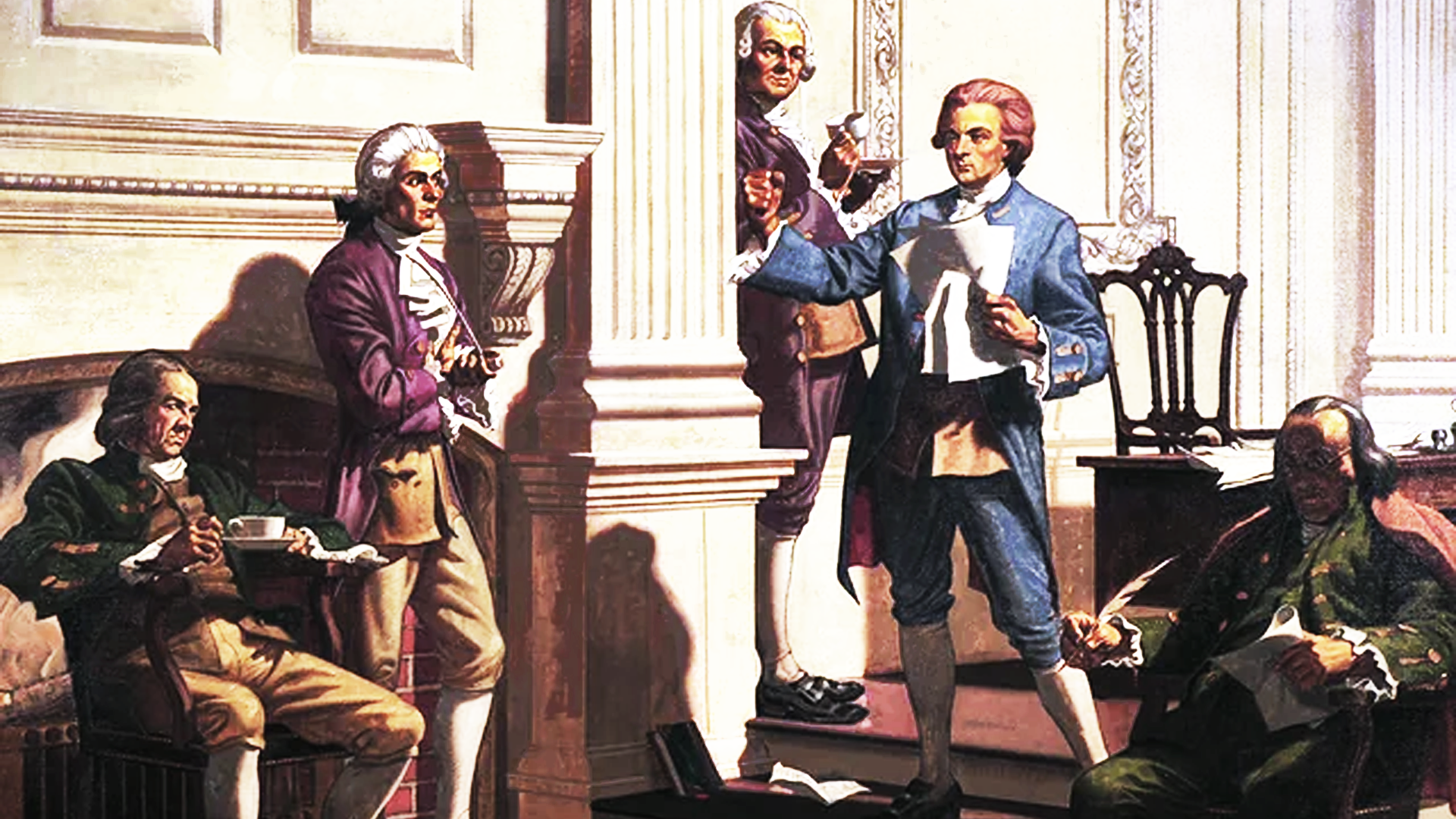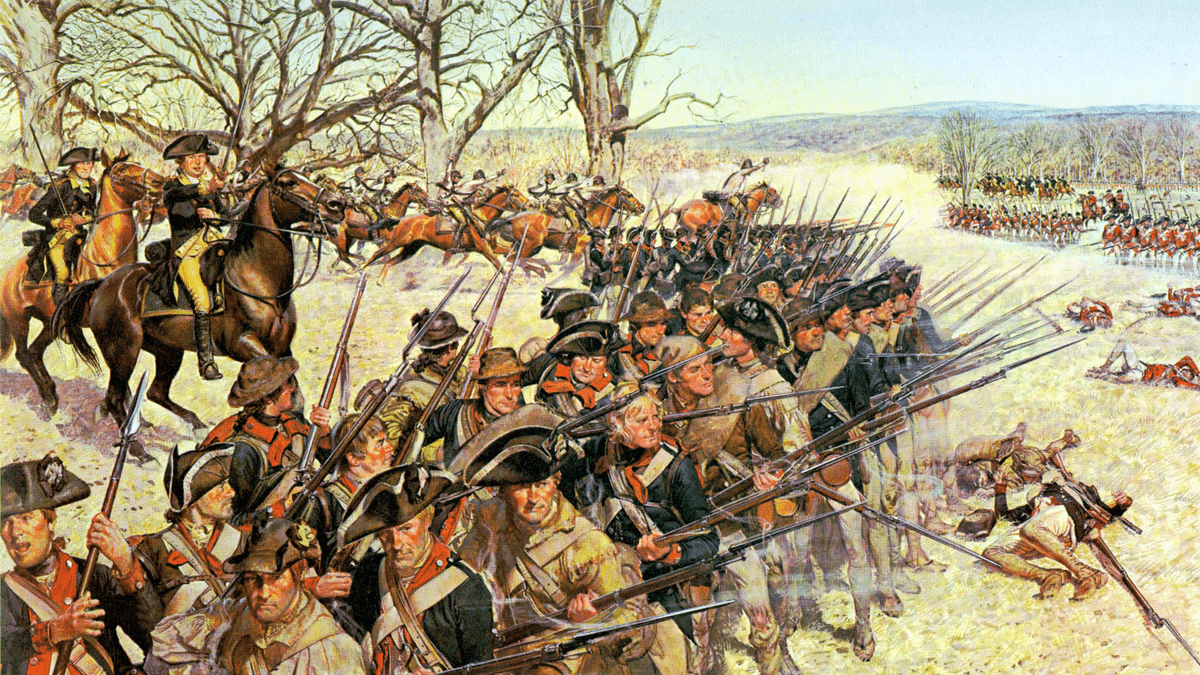Halifax Resolves and the Road to Revolution

In April 1776, North Carolina’s Provincial Congress adopted the Halifax Resolves, becoming the first colony to officially call for complete independence from Britain.
The Dive
By the mid-1700s, cracks were forming in the relationship between Britain and its American colonies. For years, colonists had managed much of their own affairs—running local assemblies, managing trade, and developing a growing sense of independence. But after the costly French and Indian War (1754–1763), Britain looked to the colonies to help pay off its war debts and fund the army that remained stationed in America. Parliament passed new taxes like the Stamp Act of 1765, which required colonists to pay for an official stamp on newspapers, legal documents, and even playing cards, and later the Townshend Acts of 1767, which placed taxes on everyday goods like glass, paint, paper, and tea.
The problem wasn’t just the money, it was the principle. Colonists argued that only their own elected assemblies had the right to tax them. Since they had no representatives in Britain’s Parliament, these taxes felt like an abuse of power. This led to the now-famous cry: “No taxation without representation!” Across the colonies, protests erupted. Merchants boycotted British goods, writers published fiery pamphlets defending colonial rights, and secret groups like the Sons of Liberty organized demonstrations in the streets. What began as a disagreement over taxes was quickly becoming a fight over freedom, government, and who truly held the right to rule.
By 1774, the colonies had reached a breaking point. Britain’s response to earlier protests, especially after the Boston Tea Party, was to tighten control rather than loosen it. Parliament passed the Coercive Acts (called the Intolerable Acts by colonists), which shut down Boston Harbor, limited town meetings, and allowed British soldiers to be housed in private homes. These measures convinced many colonists that Britain intended not to protect them, but to dominate them.
In response, leaders from twelve of the thirteen colonies met in Philadelphia for the First Continental Congress. It was the first time most of the colonies had acted together as one political body. The delegates agreed to boycott British goods and stop exporting American products to Britain until the unfair taxes and laws were repealed. They also began forming local militias, ready to defend colonial rights if Britain refused to listen.
Instead of backing down, Britain escalated the conflict. Troops were sent to enforce order, colonial assemblies were dissolved, and outspoken leaders were labeled as traitors. Tensions finally exploded in April 1775, when British soldiers clashed with colonial militia at Lexington and Concord in Massachusetts. The “shot heard ’round the world” marked the beginning of the American Revolutionary War—a struggle that would test whether the colonies were truly ready to stand on their own.
While the first battles took place in New England, the spirit of rebellion was spreading throughout the colonies—including North Carolina. The Mecklenburg Resolves of May 31, 1775, issued by local leaders in Mecklenburg County, boldly rejected Parliament’s authority and set up a system of self-rule. Though not an outright declaration of independence, the Resolves declared that British laws were “null and void” and that citizens now owed loyalty only to their own local committees. It was a daring act of defiance at a time when open rebellion could mean treason.
Legends later emerged about an even earlier “Mecklenburg Declaration of Independence,” supposedly issued on May 20, 1775, claiming complete independence from Britain. But while that story remains part of local lore, historians agree that the Mecklenburg Resolves were the real document, an extraordinary step toward self-government and an early spark of revolutionary thought in the South.
The following year, those sparks caught fire. In February 1776, Patriot forces won a major victory at the Battle of Moores Creek Bridge, crushing a Loyalist militia that had hoped to help the British regain control of North Carolina. The win boosted morale across the colonies and convinced many that independence was not only possible but achievable.
Just two months later, on April 12, 1776, eighty-three delegates gathered in Halifax for the Fourth Provincial Congress. There, they adopted the Halifax Resolves, a document that authorized North Carolina’s representatives in the Continental Congress to vote for independence and to form alliances with foreign nations. This was a turning point. North Carolina became the first colony to officially call for complete separation from Britain.
The Halifax Resolves weren’t just about one colony, they carried a message for all thirteen. They urged unity, courage, and collective action, declaring that the time for compromise had passed. Copies were sent north to the Second Continental Congress, where they added momentum to the growing push for independence. Just a few months later, on July 4, 1776, those ideas would echo through the Declaration of Independence.
The language of the Resolves accused the King and Parliament of “usurpations”—acts of tyranny that seized power from the people and destroyed their natural rights. They cited violent attacks, the destruction of property, and even British promises of freedom to enslaved people who joined their army as proof that reconciliation was no longer possible. The authors rooted their arguments in the Enlightenment ideals of thinkers like John Locke, who taught that governments exist only by the consent of the governed and that people have a right to resist tyranny.
Why It Matters
The road to revolution was not a single event, it was a decade-long awakening. Each act of resistance, from protests against unfair taxes to the first shots fired at Lexington and Concord, pushed the colonies further toward a new idea of freedom: that government must answer to the governed. The American Revolution grew from frustration into philosophy, from rebellion into a declaration that all people possess natural rights. Understanding this journey reminds us that independence was not inevitable, rather it was chosen, argued for, and fought for by people who believed that justice and self-rule were worth risking everything.
?
Why do you think North Carolina was ready to call for independence before other colonies?
How did the Halifax Resolves use evidence to justify breaking from Britain?
What is the difference between the Mecklenburg Resolves and the Halifax Resolves?
How did military victories like Moores Creek Bridge influence political decisions?
Do you think the Halifax Resolves would have had as much impact without being shared with other colonies?
Dig Deeper
A closer look at the myths and realities behind America’s founding document.
Related

The Regulator Movement: Backcountry Rebellion Before the Revolution
Long before the American Revolution, farmers in North Carolina were already fighting corruption and demanding justice.

The Role of Ideas in Revolutionary Change
The Role of Ideas in Revolutionary Change: How can ideas and writings change the course of history?

The American Revolution: Liberty, Loyalty, and North Carolina’s Role
The fight for independence wasn’t just fought in Boston and Philadelphia—it reached the farms, rivers, and hearts of North Carolina. Learn how the war unfolded, who fought, and why freedom remained a promise still waiting to be fulfilled for many.
Further Reading
Stay curious!

